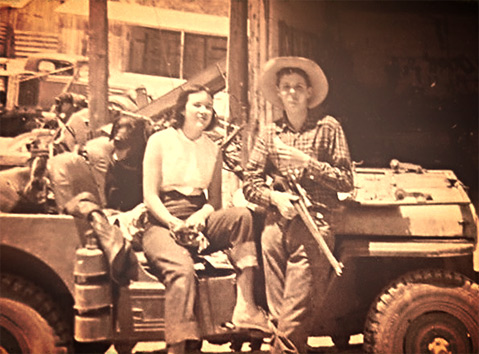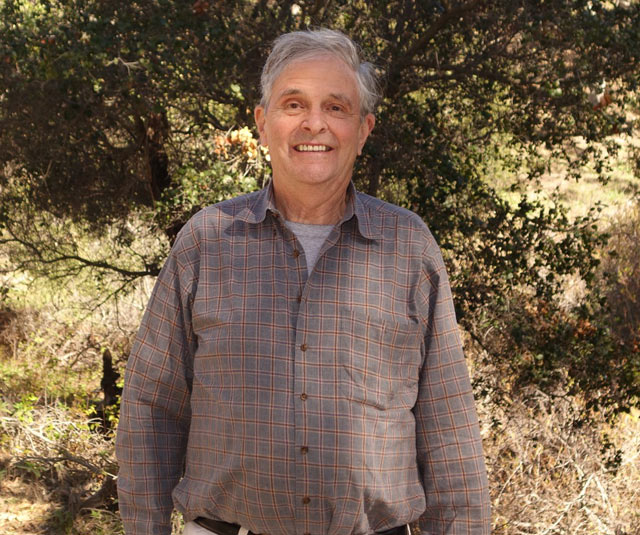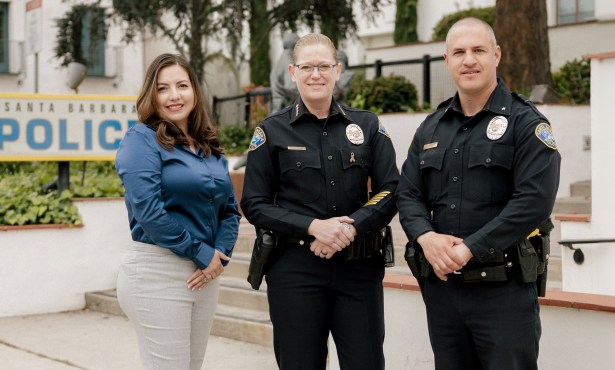A Man and His Rock
Geologist Lincoln Hollister’s Sense of the Immense Has Santa Barbara Roots

The unusual rock, a mixture of metallic and matte material yellowish in hue, was found in the barren arctic tundra of northeastern Russia and stored for decades in a geology museum in Florence. In 2008, an Italian mineralogist named Luca Bindi was sufficiently intrigued by it to ship the specimen to Paul Steinhardt, the director of the Princeton Center for Theoretical Science, who called upon his colleague Lincoln Hollister to help analyze it.
A renowned expert on the origin and formation of rocks, the initially skeptical Hollister determined that this one had an extraordinary geochemistry, hinting of extreme and hitherto unknown processes occurring in the solar system 4.5 billion years ago. The International Mineralogical Association has recently christened the mineral “hollisterite” in Lincoln’s honor, and a fitting honor it is. Like its namesake, it is unique, formed naturally, and helps expand the frontiers of knowledge.
The Hollister name is a familiar one in Santa Barbara. Lincoln is a great-grandson of Colonel W.W. Hollister, the rancher and entrepreneur who in partnership with the Dibblees bought up several land grants in Santa Barbara County in the 1850s. These include what are now the San Julian and Hollister ranches, where a rural way of life endures to this day.
Lincoln, now 78, spent much of his boyhood as a “free-range” kid in the backcountry, and the freedom to explore sparked his curiosity and shaped his sensibilities. His interest in geology started with his uncle, geologist Joseph Steffens Hollister, who was instrumental in locating water on the ranch. “I would ride around with him in the jeep and get the feel for geology and discovery, just basic discovery,” recalled Lincoln. “And that’s what I’ve done all my life. I’ve been on some kind of pathway to discovery.”

At the age of 12, Lincoln decided to do a solo camping trip with his dog, supplies, and a sleeping bag. It rained hard, and he took shelter in a cave, happily walking back the next day, unaware that the whole ranch had been mobilized to find him. “I never felt so alone as I did in that cave at the headwaters,” he said, “but I was forever afterward confident I could manage on my own, anywhere.”
At 16, he was recruited to help stop traffic and assist firefighters during the 1955 Refugio Fire, running through the grass with a stick and a flare attached while flames billowed behind him. As a student at the Thacher School, he and a friend went on horseback from Ojai to the ranch for a break, and back again afterward, a three-day journey each way through mountains, brush, and an occasional backyard. “As kids, we were let loose,” said Lincoln. “My father had confidence in us being able to cope, and because you’re there and on your own, what you have feels like an unlimited space; to go from that to the earth to the moon to the cosmos is a natural progression.”
His comfort in the outdoors served Lincoln well in his fieldwork in the wilds of British Columbia, the Peruvian Andes, and southeast Alaska. From 1966 until his retirement in 2011, he was a professor of geology, first at UCLA and then at Princeton. Post-retirement, he works on research projects and outreach teaching, but the analysis of hollisterite is a crowning achievement.
The conditions that formed the rock could reveal new theories about deep time, deep space … The Beginning. Those who crave more in-depth discussion can find it in the scientific journals, but the general takeaway is a sense of wonder. “It all started from the ranch in Gaviota,” Lincoln has said. “The exploring. The discovery. I realized there was a lot to discover right there. … and it just goes on and on and on.”



